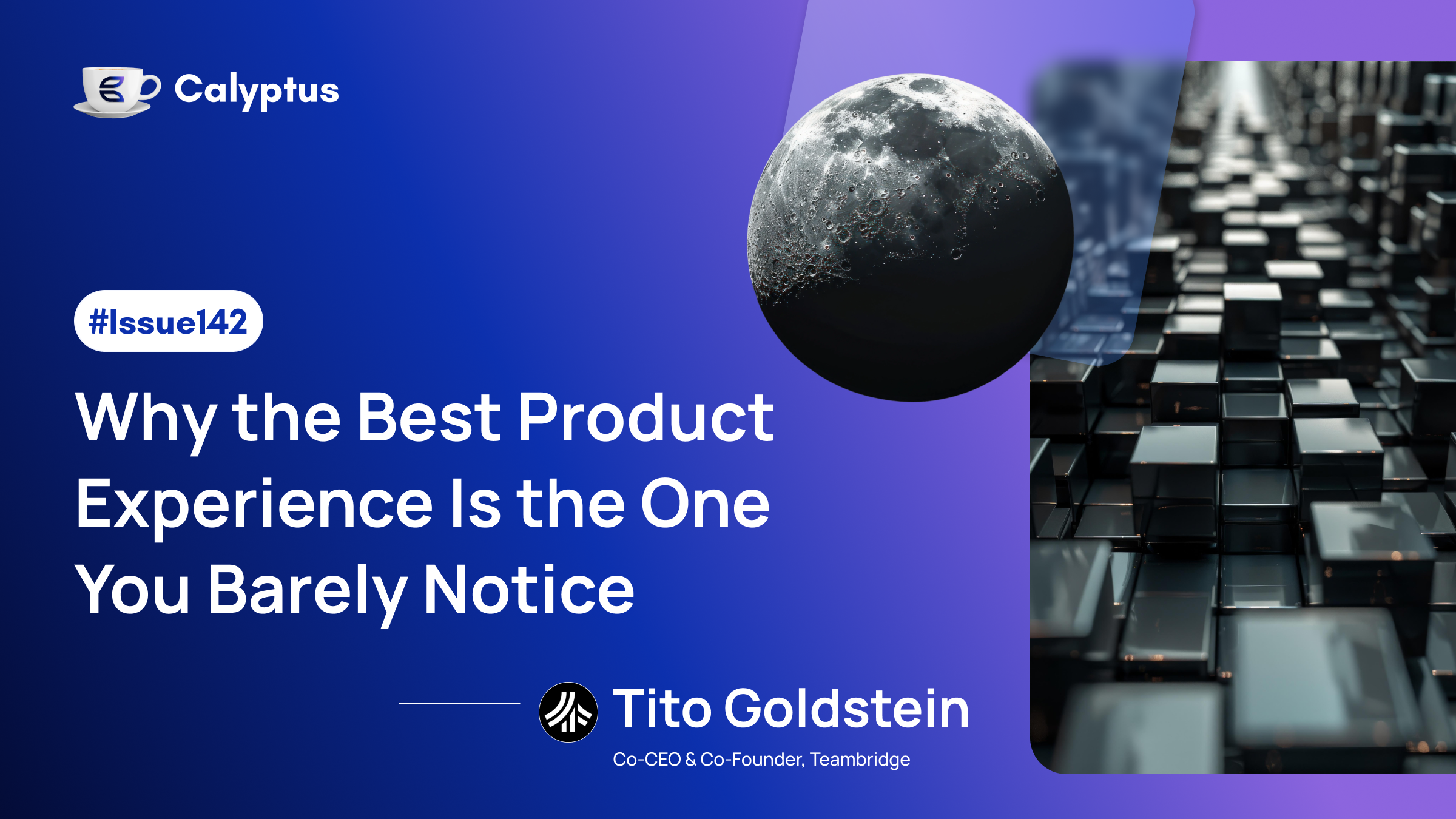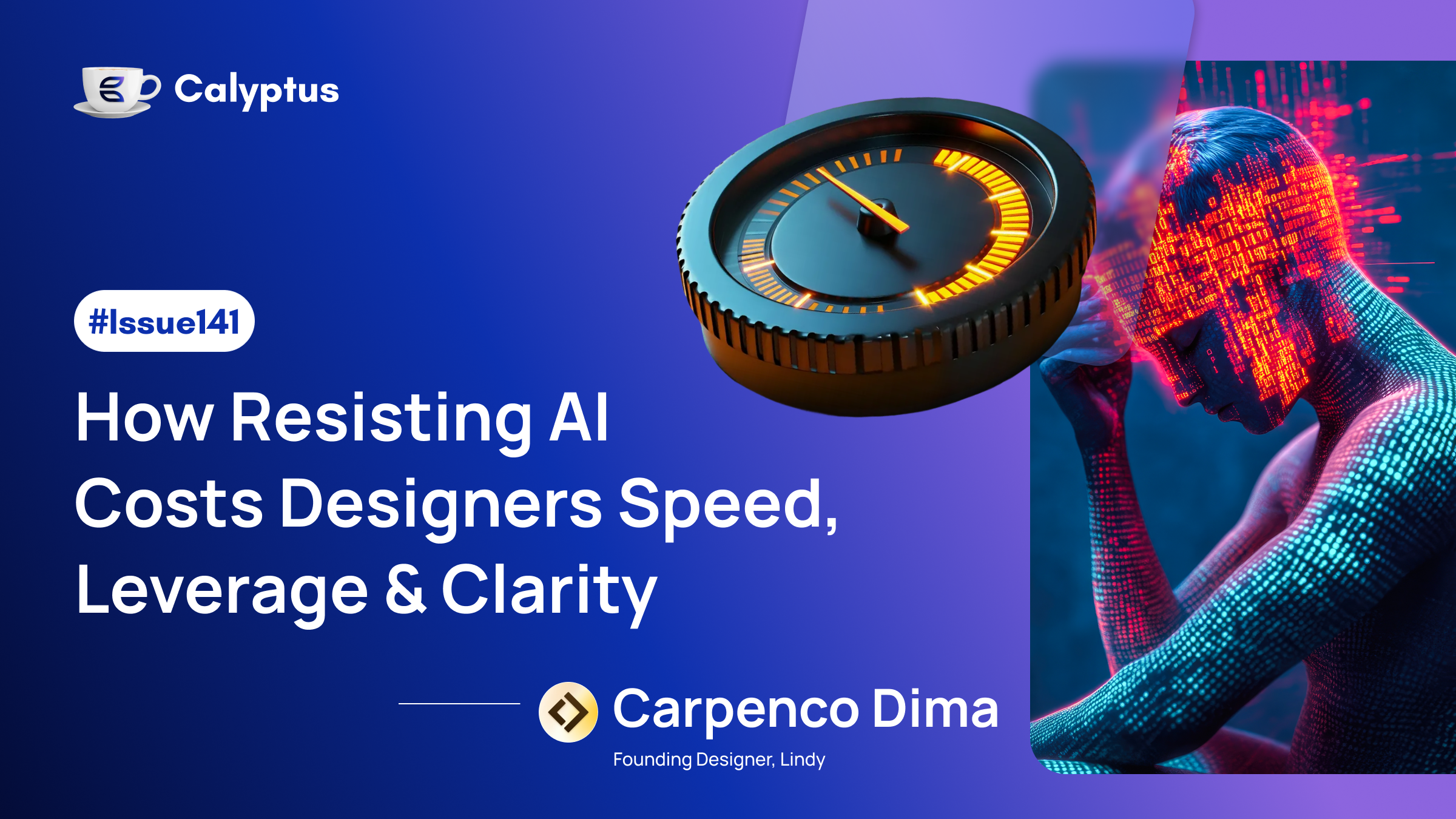In this edition of Coffee with Calyptus, we chat with Sonia Patel, Head of AI & GTM Strategy at Primrose and former Generative AI Lead at Accenture. Sonia shares her journey from enterprise to startup, revealing how creative freedom, bespoke solutions, and relentless focus on business outcomes define her approach to AI. From automating pricing to reinventing outbound communications, she breaks down what it really takes to make AI impactful.

From Generative AI Lead at Accenture to now Head of AI & GTM strategy at Primrose, what was the biggest mindset shift you had to make moving from enterprise to building a startup?
The biggest shift was rediscovering and embracing the creative freedom that comes with building something from the ground up. At Accenture, as is typical with many large enterprises, there are defined processes and playbooks which are often rigid and repetitive. Projects tend to follow a formula, and there’s a heavy reliance on legacy ways of working, even when they may not be the most logical or effective for the task at hand.
In contrast, joining Primrose has been a return to creative ownership. I’ve had the chance to shape not just AI strategy, but the actual identity of the business - our brand, our tone, and how we present ourselves in a crowded AI market. We’re very intentional about not sounding like “just another AI consultancy.” We want to be known as the trusted right-hand partner for businesses looking to create real, high-performing AI from their data.
It’s also refreshing to be back in an environment where we can truly tailor our work to each client’s goals. Unlike the more templated, one-size-fits-all approach I often saw at a larger firm, we have the freedom to design solutions that are genuinely bespoke, shaped by what each business actually needs, not just what fits the delivery model.
That shift also comes with more pressure. Unlike in a big firm where the brand often validates the work before it’s even seen, at a startup, you have to prove your value constantly. Every deliverable has to stand on its own and show clients that they’re working with the best in the field. But that’s also where the energy comes from, it pushes you to think harder, move faster, and be genuinely inventive in your approach. We’ve already seen the impact of this with clients who’ve been super impressed and shocked by how quickly and effectively we deliver.
What’s one common misconception you think companies have when trying to embed AI into their GTM strategy?
A common misconception is that simply layering AI onto existing sales or marketing processes will generate immediate value or differentiation. There’s often an assumption that adding tools like chatbots or lead scoring models is enough to be “AI-enabled,” without reconsidering whether these interventions are meaningfully aligned with the customer journey or commercial goals.
In reality, effective AI integration requires rethinking the GTM motion around what AI can uniquely enable, whether that’s hyper-personalised segmentation, predictive pipeline management, or scalable content generation. These are not surface-level add-ons; they require changes to team workflows, measurement frameworks, and often even commercial incentives.
At Primrose, we see clients succeed when they start with clear GTM objectives - such as reducing customer acquisition cost or increasing expansion revenue - and then design AI capabilities that directly support those goals. That often means reshaping not just the tooling, but how teams are structured and how success is measured. Without that foundational alignment, AI becomes just another feature, not a driver of real competitive advantage.
What was the hardest challenge you faced driving generative AI adoption in your own journey, and how did you get past it?
The hardest challenge was gaining meaningful buy-in from key stakeholders during the early stages of generative AI adoption. I entered the space soon after GenAI captured mainstream attention (thanks to ChatGPT), and while many clients were curious, very few were ready to take the leap. There was still a strong sense of fear, fuelled by headlines about AI misbehaving, hallucinating, or causing brand damage. For many, it felt safer to watch from a distance.
One of the biggest frustrations was trying to land the message that early experimentation was essential to avoid being left behind. But that urgency didn’t quite connect until much later. Around a year or so in, the conversation flipped completely. Suddenly clients were asking for large-scale AI tools to keep up with their peers, without realising they lacked the foundational data and systems to make it work.
What eventually unlocked progress was changing the narrative. Instead of focusing on futuristic AI use cases, I started demonstrating what I call the “mundane but meaningful” applications. For example, automating manual pricing processes using AI models that calculate elasticity from external factors, or replacing reporting cycles that took teams two days a week with near-instant outputs. These are not flashy, but they drive measurable performance improvements.
When stakeholders see that AI can deliver tangible, operational value today, they start to trust it. It becomes less about the hype and more about business outcomes. That shift in approach was what helped move the conversation from resistance to real adoption.
In your current role at Primrose, how are you practically integrating AI agents or automation into your own workflows? What has been the impact?
At Primrose, we use AI and automation in very practical ways to streamline how we work and how we present ourselves. The focus is on reducing time spent on repetitive tasks while improving the quality and personalisation of our output.
One of the clearest examples is in content and creative production. We use generative AI to design images for decks and client materials. This allows us to produce visuals that feel realistic and fully aligned with our brand. The colours, tone and overall look are consistent across everything we produce, which gives our materials a polished and cohesive feel without relying on traditional design processes or stock imagery.
We also built a tool to support outbound communication, especially for newsletters. It takes our core contact list and generates draft emails tailored to each person based on our most recent interactions with them. This has made a huge difference. Instead of writing everything from scratch for more than a hundred people, we start with strong, personalised drafts that we can quickly edit and send. It makes the process much more scalable while still feeling high touch.
On the operational side, we use AI for our knowledge management whereby our internal users can ask a question in slack and the tool will revert back a relevant document, along with the images of the specific slides it thinks are of use. This reduces the time spent looking for material and checking internally if it’s the correct item. These tools cut the busywork and let us focus on what actually drives value for our clients.




